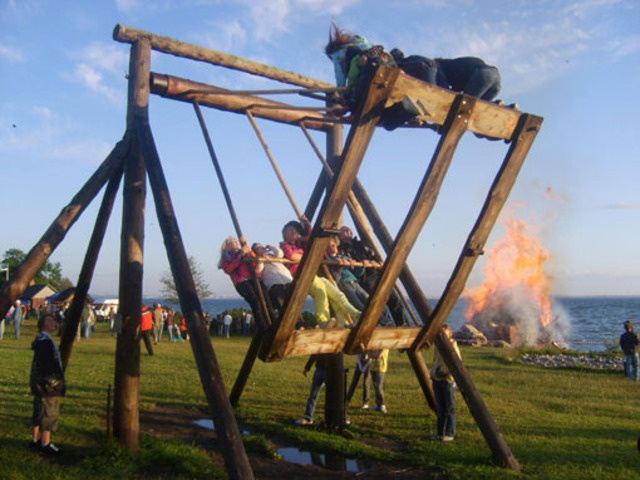How people celebrate national holidays is often a good way to seek for similarities connecting nations.
Christmas aka Yule time
Yule was an indigenous midwinter festival that went through later undergoing Christianised reformulation resulting in the now better known Christmas time.
The Saga of Hákon the Good credits King Haakon I of Norway with the Christianization of Norway as well as rescheduling the date of Yule to coincide with Christian celebrations held at the time. The saga states that when Haakon arrived in Norway he was confirmed a Christian, but since the land was still altogether heathen and the people retained their pagan practices, Haakon hid his Christianity to receive the help of the “great chieftains.” In time, Haakon had a law passed establishing that Yule celebrations were to take place at the same time as the Christians celebrated Christmas
Today, Christmas is still called Yule time in Nordic countries and is equally similarly celebrated by old pagan traditions among which there’s a large feast, mulled wine and yule goat to name a few.
Jul (Sweden), Jul (Denmark), Jul (Norway), Jól (Iceland and the Faroe Islands), Joulu (Finland) and Jõulud (Estonia).
Midsummer’s Day aka St. John’s Day
• Like in other Nordic countries, in Estonia one of the most celebrated day of the year after Yule is Jaanipäev, the Midsummer’s day aka St. John’s Day. Parallel to the midwinter holiday of Yule, St. John’s Day is the period of time centered upon the summer solstice and like many other traditions in Northern Europe has it’s origin from pre-Christianization time. The tradition to lit bonfires, leap over them, dance, chant and feast has survived from the Neolithic times.
Shrove Tuesday – Vastlapäev and Semla
In nordic countries one of the traditions to celebrate the Shrove Tuesday is to eat delicious buns with whipped cream. In Estonian it’s known as Vastlakukkel, in Swedish as Semla, in Finnish as laskiaispulla, in Latvian as vēja kūkas, and fastelavnsbolle in Danish and Norwegian.
The oldest version of the semla was a plain bread bun, eaten in a bowl of warm milk. In Finland and Estonia the traditional dessert predates Christian influences. Laskiaissunnuntai and Laskiaistiistai were festivals when children and youth would go sledding or downhill sliding on a hill or a slope to determine how the crop would yield in the coming year. Those who slid the farthest were going to get the best crop. Hence the festival is named after the act of sliding or sledding downhill, laskea. Nowadays laskiainen has been integrated into Christian customs as the beginning of lent before Easter.



